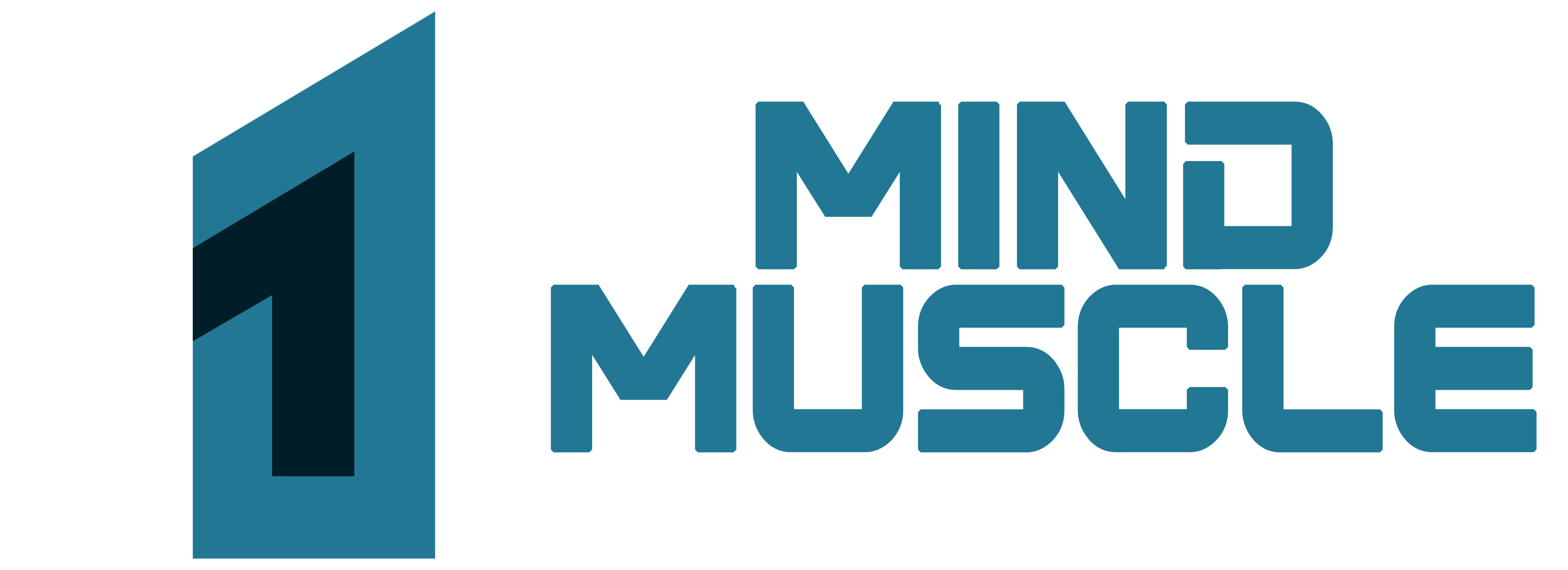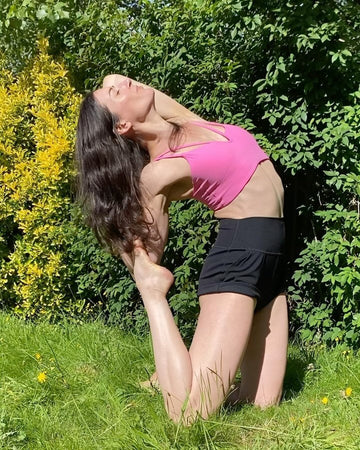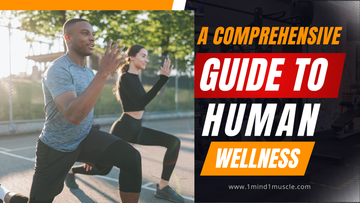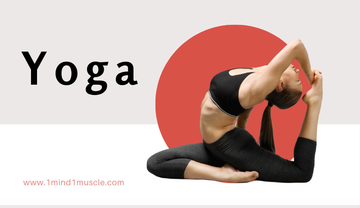Introduction to Exercise Yoga
Yoga is more than just a physical workout—it’s a holistic approach to well-being that connects the mind, body, and spirit. In the ancient world over 5,000 years ago, yoga evolved into a widely practiced form of exercise worldwide.
But why is yoga considered such a powerful workout? Unlike traditional exercise routines that focus solely on physical fitness, yoga integrates flexibility, strength, balance, and mindfulness. Whether you're a complete beginner or an experienced practitioner, yoga offers something for everyone.
The Benefits of Practicing Yoga
Yoga provides a wealth of benefits, impacting both physical and mental health.
Physical Benefits of Yoga
- Improves flexibility and posture
- Increases muscle strength and tone
- Enhances balance and coordination
- Boosts cardiovascular health
- Aids in weight loss and metabolism regulation
Mental and Emotional Benefits
- Reduces stress and anxiety
- Enhances focus and mental clarity
- Encourages mindfulness and relaxation
- Improves sleep quality
- Helps with emotional resilience
Yoga is often recommended for stress relief, mental wellness, and overall well-being. Studies have shown that regular yoga practice can significantly lower cortisol levels (the stress hormone), making it an effective tool for managing stress-related issues.
Types of Yoga for Exercise
Different types of yoga offer unique benefits. Here are some of the most popular forms of yoga for fitness:
Hatha Yoga
- Focuses on basic poses and breathing exercises
- Ideal for beginners
Vinyasa Yoga
- Fast-paced, flowing movements
- Great for cardiovascular health and endurance
Ashtanga Yoga
- Intense, structured sequences
- Builds strength and flexibility
Bikram Yoga (Hot Yoga)
- Practiced in a heated room
- Helps with detoxification and flexibility
Yin Yoga
- Slow, deep stretching
- Targets connective tissues and improves flexibility
Each style has its benefits, so finding one that suits your fitness goals is key.

Essential Yoga Poses for Beginners
If you're new to yoga, start with these foundational poses:
- Mountain Pose (Tadasana) – Improves posture and alignment
- Downward-Facing Dog (Adho Mukha Svanasana) – Strengthens arms and legs
- Warrior I & II (Virabhadrasana I & II) – Enhances strength and stamina
- Child’s Pose (Balasana) – Relieves stress and tension
- Tree Pose (Vrksasana) – Improves balance and focus
These beginner-friendly poses build strength, flexibility, and awareness, making them perfect for starting your yoga journey.
Yoga for Weight Loss and Toning
Contrary to popular belief, yoga is an excellent tool for weight loss and body toning. It helps:
- Burn calories through dynamic movements
- Improve metabolism
- Strengthen core muscles
Best Yoga Poses for Weight Loss
- Plank Pose (Phalakasana) – Strengthens the core
- Boat Pose (Navasana) – Targets the abdominal area
- Bridge Pose (Setu Bandhasana) – Engages the glutes and thighs
Incorporating these poses into a regular practice can help you achieve a leaner, more toned physique.
How to Start a Yoga Practice
Starting a yoga practice can be overwhelming, but with the right approach, it becomes an enjoyable and fulfilling journey.
Setting Up a Yoga Space at Home
Creating a dedicated yoga space at home enhances motivation and consistency. Choose a quiet area with enough space to stretch comfortably. Add a yoga mat, bolster, and blocks to support your practice. Soft lighting, candles, or incense can further enhance relaxation.
Choosing the Right Yoga Mat and Props
- Yoga Mat – Opt for a non-slip, cushioned mat for comfort and stability.
- Blocks & Straps – Useful for beginners to modify poses and improve flexibility.
- Bolsters & Blankets – Essential for restorative yoga and added comfort.
Finding Online or In-Person Yoga Classes
For beginners, guided instruction can be beneficial. Consider joining a yoga studio, hiring a private instructor, or following online classes on YouTube or yoga apps.
Breathing Techniques in Yoga (Pranayama)
Breath control is a fundamental aspect of yoga, influencing energy levels, focus, and relaxation.
Importance of Breath Control in Yoga
Proper breathing enhances endurance, detoxifies the body, and calms the mind. Many yoga styles incorporate breathwork to deepen practice and increase mindfulness.
Popular Breathing Techniques
- Diaphragmatic Breathing (Belly Breathing) – Encourages deep, slow breathing for relaxation.
- Ujjayi Breathing (Ocean Breath) – Used in Vinyasa yoga to create a meditative flow.
- Alternate Nostril Breathing (Nadi Shodhana) – Balances energy and calms the nervous system.
Benefits of Pranayama for Health
- Improves lung function
- Reduces stress and anxiety
- Increases oxygen supply to the brain
- Supports cardiovascular health
Yoga for Stress Relief and Relaxation
Yoga is a natural stress reliever, promoting relaxation through mindful movement and meditation.
How Yoga Reduces Stress and Anxiety
Yoga lowers cortisol levels, encourages deep breathing, and improves heart rate variability, making it an effective tool for managing stress.
Best Yoga Poses for Relaxation
- Child’s Pose (Balasana) – Calms the nervous system.
- Legs-Up-The-Wall Pose (Viparita Karani) – Reduces fatigue and improves circulation.
- Corpse Pose (Savasana) – Promotes deep relaxation and mindfulness.
Meditation and Mindfulness in Yoga
Incorporating meditation with yoga deepens relaxation and mental clarity. Even 5–10 minutes of meditation after a yoga session can significantly improve overall well-being.
Common Mistakes to Avoid in Yoga
Beginners often make mistakes that can lead to injury or frustration. Here’s how to avoid them:
Overstretching and Injury Prevention
- Avoid forcing the body into difficult poses.
- Progress gradually and listen to your body.
- Warm up properly before intense stretches.
Importance of Proper Alignment
- Incorrect alignment can cause injuries.
- Focus on form rather than depth in poses.
- Use props to maintain correct posture.
Listening to Your Body’s Limits
Each body is different—respect your limitations. Modify poses as needed and gradually work toward advanced movements.
Yoga for Different Age Groups
Yoga is for everyone, regardless of age or fitness level. Here’s how it benefits different groups:
Yoga for Kids
- Enhances flexibility and coordination.
- Improves concentration and emotional regulation.
- Encourages a healthy lifestyle from an early age.
Yoga for Seniors
- Helps maintain mobility and balance.
- Reduces joint pain and stiffness.
- Promotes relaxation and mental well-being.
Yoga for Pregnant Women
- Supports physical and emotional health during pregnancy.
- Eases common pregnancy discomforts (back pain, swelling, etc.).
- Prepares the body for childbirth.
The Role of Diet in Yoga Practice
What you eat affects your yoga performance and overall well-being.
Eating for Energy and Flexibility
- Choose whole, plant-based foods for nourishment.
- Eat light meals before yoga to avoid discomfort.
- Avoid processed foods and excessive sugar.
Best Foods for Yogis
- Fruits, vegetables, nuts, and seeds for nutrients.
- Lean proteins and whole grains for sustained energy.
- Herbal teas and water for hydration.
Hydration and Detoxification
Drinking plenty of water supports flexibility and detoxification. Coconut water and herbal teas can also help replenish electrolytes.
Yoga vs. Other Forms of Exercise
How does yoga compare to other workout styles?
Yoga vs. Gym Workouts
- Gym workouts focus on muscle building; yoga enhances flexibility and balance.
- Yoga reduces stress, while high-intensity workouts can sometimes increase cortisol levels.
- Yoga has a lower impact, making it suitable for all fitness levels.
Yoga vs. Pilates
- Both improve core strength, but Pilates emphasizes controlled movements.
- Yoga incorporates spiritual and mindfulness aspects, while Pilates is more fitness-oriented.
Yoga and Cardio Workouts
- Vinyasa and power yoga can provide cardio benefits.
- Combining yoga with cardio workouts creates a balanced fitness routine.

How to Stay Consistent with Yoga
Many people start yoga but struggle to stay consistent. Here’s how to maintain motivation:
Creating a Yoga Routine
- Set a fixed schedule for yoga practice.
- Start with 10–15 minutes daily and gradually increase the duration.
Overcoming Lack of Motivation
- Set personal goals (flexibility, stress relief, etc.).
- Track progress through journaling or apps.
Joining Yoga Communities for Support
- Join local or online yoga groups.
- Participate in yoga challenges for engagement.
The Future of Yoga and Fitness
Yoga continues to evolve with new trends and innovations.
Modern Yoga Trends
- Aerial yoga and acro yoga are gaining popularity.
- Yoga combined with HIIT for enhanced fitness benefits.
Yoga and Technology (Apps and Online Classes)
- Apps like Down Dog and Glo make yoga accessible from home.
- Virtual reality (VR) yoga experiences are emerging.
Yoga as a Lifelong Practice
Unlike high-impact workouts, yoga is sustainable for life, offering continuous benefits for physical and mental health.
Conclusion
Exercise yoga is a transformative practice that improves flexibility, strength, and mental clarity. Whether you aim for stress relief, weight loss, or overall wellness, yoga provides an accessible and enjoyable way to achieve your fitness goals. By incorporating breathwork, mindfulness, and consistency, yoga becomes more than just exercise—it’s a lifestyle.
FAQs
1. How often should I practice yoga?
For best results, aim for at least 3–5 sessions per week. Daily practice, even for 10–15 minutes, can yield significant benefits.
2. Can yoga help with weight loss?
Yes! Dynamic yoga styles like Vinyasa and Ashtanga burn calories, while yoga also boosts metabolism and promotes mindful eating.
3. Is yoga enough for a complete fitness routine?
While yoga improves strength and flexibility, combining it with cardio and resistance training can provide a well-rounded fitness plan.
4. What is the best time to do yoga?
Morning yoga energizes the body, while evening yoga promotes relaxation. Choose a time that fits your schedule and lifestyle.
5. Can beginners do yoga at home?
Absolutely! Many online resources provide guided yoga classes for beginners. Just ensure proper form and start with beginner-friendly poses.





